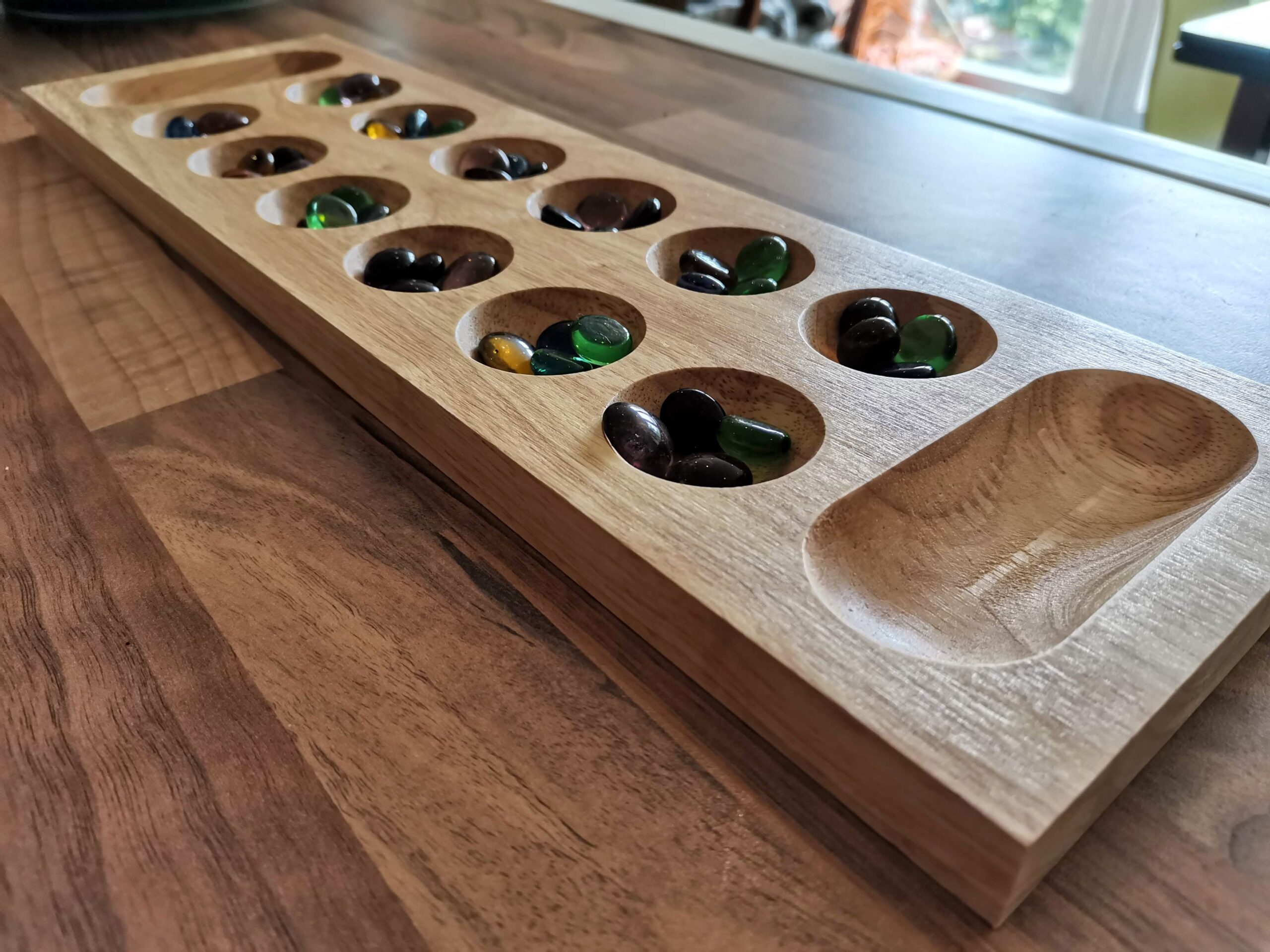10 Games For Your Non-Gamer Game Night

6. Just One (2018) ~£17
(Co-operative)
Just One will go down as a classic party game in the future. Players work together to try to identify as many words as possible. The guessing player has a list of word facing away from them, and the rest of the players have to try to help them guess the word the roll of a dice has chosen for them. Everybody has a small plastic easel and a dry-wipe pen, and each person has to write a one-word clue on their easel – hence the name, Just One.
Sounds pretty easy, right? Here’s the rub. Any identical answers, including those which are as good as identical, are turned face-down on the table, leaving the guessing player only the unique clues to work with. It’s a devilishly simple concept, but one which works so well. You’ll watch people gauging the others around the table, trying to work out what word they’d choose, so you can pick the next-best. But wait! What if they’re thinking the same thing? So should I choose the really obvious clue now instead? Argh!
It’s fantastically easy to play and understand, and I love the look of bewilderment on people’s faces as they look at these seemingly unrelated words, trying to wring some sense from them. It’s cheap, it plays from three to seven players, but really you need at least four, and the more, the merrier. If you’ve got kids old enough to write a word, they can play too, and you’ll get some really unusual insights into the inner workings of the minds of people you’ve known for years.
7. Mysterium (2015) ~£30
(Co-operative)
Mysterium is the most expensive game on this list, weighing in at a whopping 30 quid. I really wanted to include it though, as it’s a ‘big box’ game which I think would pass people by otherwise. I’ve had huge success with introducing Mysterium to groups of non-gamers, and for a few of them it’s even led to them playing – and enjoying – more niche, hobby games.
In Mysterium, one player plays as the ghost of someone murdered at a manor at the turn of the 20th Century. The rest of the players are psychics, visiting the scene in the 1920s, trying to interpret the ghost’s messages to unmask their killer. Over the course of seven rounds, the ghost stays silent and passes out surreal artwork cards to the psychics, to try to help them identify the suspect from a selection of five or six. These clues can range from the obvious – the suspect is a chef and there’s a kitchen in the picture – to the abstract – the killer is wearing green and I can see something green in the picture.
The fun in Mysterium comes from two places mostly: the communal joy when the ghost’s clues have led the psychics to a successful reveal of the killer, and also the ghost trying to explain why they gave someone a card which was nigh-on impossible to interpret. It’s a really nice design, and so simple to explain and play. Up to seven of you can play, and it’s a great game for families to come together over.
8. Cockroach Poker (2004) ~£12
(Competitive)
Cockroach Poker is another game I’ve praised here before. It’s another card game that you can explain to everyone in a couple of minutes, and can be enjoyed by anyone from five to 99 years-old. On every card is some kind of bug or animal you’d associate with a witch’s cauldron.
The aim of the game is to get someone to collect four of the same animal in front of them. The way you get someone to take a card is where the game lives. Pass someone a card, face-down, and tell them which animal is on it. It doesn’t matter if you’re telling the truth or lying about which animal is on it, if the other person correctly doubts or believes you, you have to take the card and place it in front of you. Otherwise they do the same.
Outsmarting your opponents is the name of the game here. Actually, Cockroach Poker is the name of the game, and it’s the poker part that’s important. Keeping a poker face while you try to deceive the people around you is the key to winning, whether that means bluffing, double-bluffing, or even triple-bluffing. Bare-faced lying to your friends, family, or co-workers has never been so satisfying.
9. The Crew (2019) ~£15
(Co-operative)
The Crew is a co-op game about completing missions in space. Well, that’s what it says on the box, but the truth is that the theme is about as thick as that skin you get on the milk when you’re making cocoa. It doesn’t matter though, because what The Crew is, is trick-taking brilliance, plain and simple.
I’m not going to explain what trick-taking is here, because it’s been around for donkeys years, so ask your parents. What I will tell you is that The Crew has refined the formula and turned it into a mission-based game, and a game where you won’t utter a word until each mission is over. The booklet which comes with the game explains the missions, which get progressively more difficult. You will win, you will lose, and you’ll play again. And again. And again. The Crew is very addictive, and immensely satisfying when you manage to overcome a mission you’ve been stuck on for a while.
You might thing that a game where you don’t talk during the missions sounds pretty solitary, or boring, but the reality is something different. The missions play out pretty quickly, and you can still communicate in a way, through using a clever system with a little cardboard token. The magic comes directly after a mission. Win or lose, the table explodes into excited chatter about what’s just happened. How it went well, what you could have done better, or that crazy play which just succeeded. I don’t think I’d enjoy it as much with any player count other than four, which feels perfect.
10. Wavelength (2019) ~£30
(Co-operative & competitive, teams)
Okay, I lied, there is one more thirty quid game on the list, but what a good one. Wavelength is a game that can work with lower player counts, but really comes into its own with a big group of eight or ten people.
Players split into a couple of teams, then the person giving the clue for the round draws a card with two opposites on either end of it – Hot and Cold for example. There’s a big plastic dial that’s covered up, and after spinning it to a random position, the person giving a clue takes a peek to see where on the dial the scoring zone is. The person giving the clue has to come up with a single clue to give their team an idea of where on that scale the line is pointing. If I said ‘coffee’ to you, how far to the Hot side of the dial would you point your guess?
Wavelength is a great social experience, especially if the players all know one another. You’ll find yourself debating with your team as to just how bad a superpower ‘uncontrollable flatulence’ is, moving the little dial fractions of degrees to satisfy everyone. As with other games in this list, it’s the conversations that happen between rounds which makes it come alive. “I told you he likes his coffee at the temperature of the surface of the sun! You should have listened to me!”. It’s a great way to get a table to come to life, especially with a couple of drinks, if you’re that way inclined.
Summary
There you have it then, ten games which I believe can be easily learned and enjoyed by gamers and non-gamers alike. What do you think? Do you agree with me, or think I’ve missed something important from my list? Let me know in the comments below, or come talk to me on Twitter.
If you enjoyed these, you might like my other posts like my Top 5 Two-Player Games, or my Top 5 Games Over Ten Years Old.












As 8 of those 10 games are on my shelves I completely agree with your selection 😊.
Great minds think alike, Keith 🙂
Mysterium & Anomia the missing games in my collection.
I see alot of lists like this and many times : they are bad. This list is awesome!
Thanks very much 🙂
Anomia and 6 nimmt are now firmly on my ‘Must buy’ list!
You should be able to get both for about £20ish, and you’ll definitely get your moneysworth 🙂